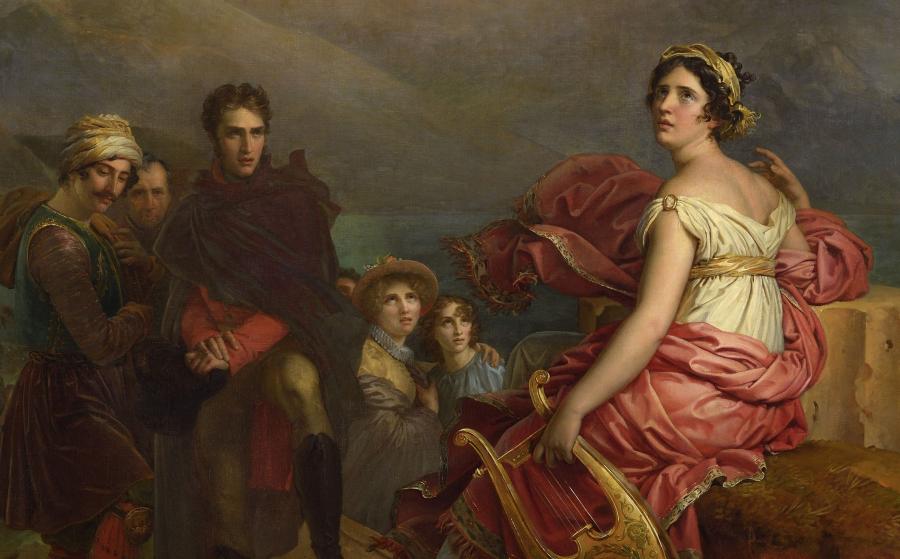Corinne at Cape Miseno
Information sur l’artiste
François Gérard [Rome, 1770 – Paris, 1837]

Corinne au Cap Misène, 1819-1821.
Image © Lyon MBA - Photo Alain Basset
This large-format canvas was commissioned from the painter Gérard in 1819 by Prince August of Prussia (1779-1843), with Juliette Récamier (1777-1849) acting as an intermediary, in homage to their mutual friend Germaine de Staël (1766-1817), a writer who had passed away two years earlier. The subject, defined by those who commissioned the work, is taken from Madame de Staël's novel Corinne ou l’Italie, which was published in 1807 and proved to be a great literary success.
The scene is set on Cape Miseno, facing the bay of Naples and a grumbling Vesuvius in the background. Beneath the night sky, the poet Corinne, who has been conjuring up memories associated with these mythical ancient sites, interrupts her improvisation and sets down her lyre, overcome with emotion. Before her is her lover Oswald, an English officer, and his friends, overwhelmed and still transfixed by the beauty of her creation.
The commission stated that the painter should give the heroine Madame de Staël's features, but Gérard instead chose to create an idealised representation. In this painting, he manages to reconcile a purity of line and a quest for grace and idealism, direct reference to the Neo-classicism he inherited from his teacher Jacques Louis David, with new ideas leaning towards Romanticism, in the way the sentiments are expressed and the picturesque details bringing the composition to life.
Given to Madame Récamier by Prince August as a token of his affection, the work took pride of place at the centre of the living room in Juliette's apartment at l’Abbaye-aux-Bois in Paris. It became part of the decor of her famous salon, where leading figures from the world of art and literature gathered.
1819-1821
Oil on canvas
H. 256.6; L. 277.5 cm
Bequeathed by Juliette Récamier in 1849
Inv. A 2840





